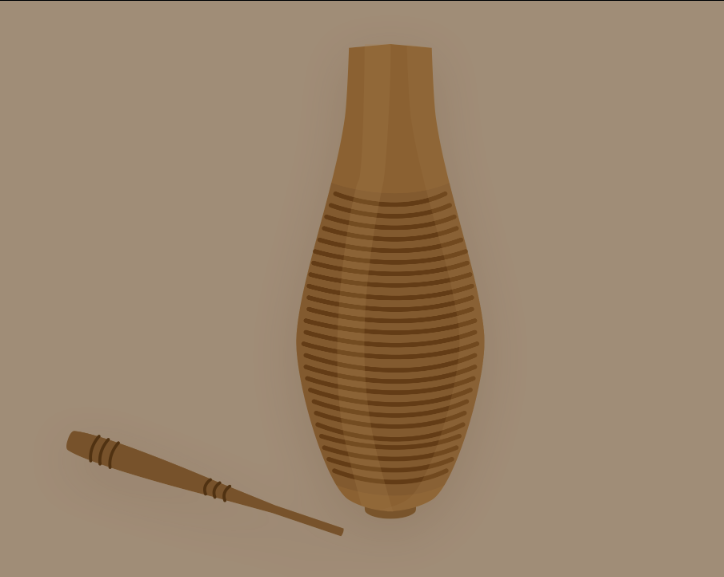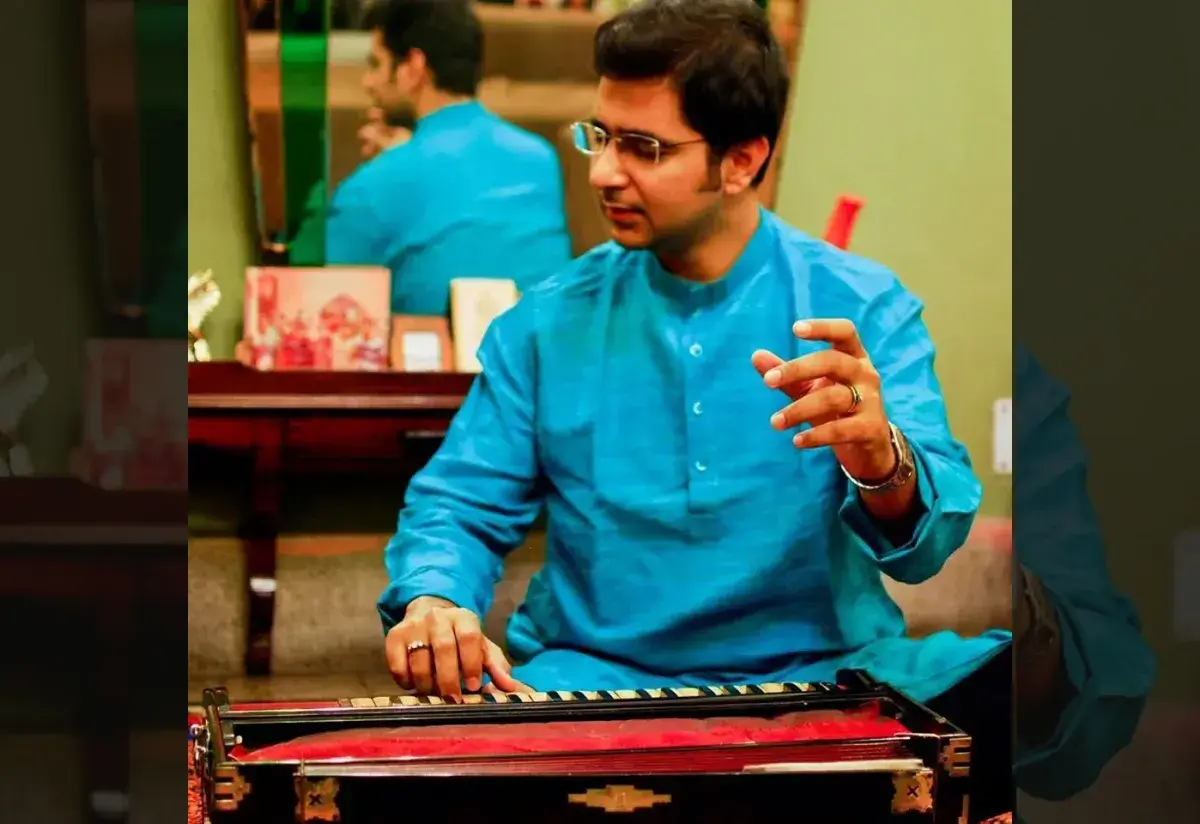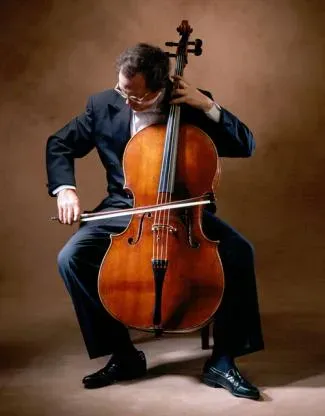Introduction to Guiro
Guiro instrument is a long, hollow gourd with ridges that produce sound when a stick, called a pua, is scraped along the sides of the instrument. The guiro is classified as a percussion idiophone because the entire instrument vibrates to create sound. Popular in Latin American music and a staple of worldwide dance rhythms, this percussion instrument has been around for hundreds of years and continues to gain popularity.
What is the guiro instrument sound? The guiro sound is most often associated with the Puerto Rican and Cuban musical genres of son, trova, and salsa, as a rhythm accompaniment. The instrument is typically included in a percussion ensemble or played by a singer. Like maracas or claves, the guiro keeps time during a performance, making it a popular instrument for a lead singer. In addition to Latin music, the guiro is also found in the percussion sections of Western classical orchestras, sometimes referred to as a ‘grater’ in musical scores. The first guiro was first included in Latin orchestral pieces and later adopted by European composers.
Guiros are played by holding the gourd in the palm of the left hand with the thumb held in a sound hole on the back. Some guiros have two sound holes, meant to be held with the thumb and finger. These holes help the player keep the guiro steady and in place while playing fast or complex rhythms. Some guiros have an elongated handle at one end without ridges where it’s meant to be held—these handles are typically only a part of traditional gourd guiros. The pua is held by the right hand and moved along the notches in the instrument to create a rasping sound.
Traditional guiros are made from the fruit of the higuero tree native to Puerto Rico. Gourds from many similar trees native to Latin and Central America are used, as well. The gourds are hollowed, dried and the shells carved with parallel notches. The width and placement of the notches or ridges creates slight changes in the sound but they are all very similar. The gourds may also include decorative carvings or paintings, particularly when used in folk or devotional music.
Modern guiros can be made of wood, metal, plastic, and fiberglass. Wood and fiberglass guiros have a sound that is most like the traditional gourd. The scraper can be made from multiple materials as well, including wood, metal, bamboo, ceramic, and plastic.
History of Guiro
The scraped idiophone is a common type of percussion instrument found all over the world, likely developed around the same time as other gourd-based percussion instruments. These were native to many indigenous cultures as part of folk and ceremonial performances. The guiro is believed to have originated in Puerto Rico with the Taíno people, the indigenous peoples of the Caribbean in the 16th century and beyond. The earliest recorded reference to the instrument was in 1788, by a monk and Puerto Rico historian called Fray Íñigo Abbad y Lasierra. He described it as an instrument to accompany dancers along with maracas and tambourines.
The guiro instrument was used in folk and dance music of Puerto Rico and Cuba for centuries before becoming popular in broader Latin musical genres, such as salsa and conga. The guiro was developed along with other popular Latin percussion instruments like maracas, bongos, and claves. As Latin percussion became popular across the world during the 19th and 20th centuries, the guiro became a common addition to drum kits and international percussion ensembles. Modern guiros have also evolved to encompass other features, like being filled with material so it can be scraped or shaken to produce sound. Currently, the largest producer of guiros in Latin American manufacturers a dozen different types of instruments with various patterns, materials, and sounds.
Types of Guiro Musical Instrument

Guiros vary in material and size but they typically fall between 25 and 40 cm long. Traditional gourd guiros with wooden scrapers are still popular all over the world, but there are many different types of these instruments that produce a wide variety of distinct sounds.
Fiberglass and wooden guiros are made by many percussion makers to be more durable when playing guiro instrument, while maintaining a smooth sound that’s closer to the original. While not as popular with traditional Latin percussionists, they are used in many Western popular and orchestral music pieces.
Metal guiros produce a sharper sound popular in dance music. Metal scraped idiophones originated in other countries but over the years they have been merged with the design of the guiro to create a hybrid instrument. There are also flat metal guiros. These lack the resonance of the hollow, cylindrical guiros, but retain the recognizable scraping sound. The flat guiros are popular for drum kits, since they only require one hand to play.
There are two types of scrapers that are popular with the guiro. The traditional stick is the simplest and most widely used. The alternative is a wooden or plastic block with metal tines in it, like a comb. This type of scraper creates a sharper, more complex sound when it’s used on a guiro. The metal tines are almost exclusively used with a metal guiro, but they can also be used on a wooden or gourd guiro to create a distinct sound from a wooden scraper.
There are several similar instruments to the guiro, like the Cuban guayo, the Dominican guira, the Columbian guacharaca, the Brazilian reco-reco, the Afro-Peruvian quijada and the American washboard. They are all made from different materials but they produce sound in the same way a guiro does. However, the guiro musical instrument is arguably the most popular scraped idiophone in the world, particularly in Latin American music.
Guiro Playing Techniques
Although the guiro seems like a simple instrument to learn to play, there are distinct playing techniques that allow a percussionist to produce a variety of sounds and rhythms. Playing the guiro requires an understanding of different rhythm patterns, like salsa rhythms or taals. Each Latin music style has its own rhythm patterns that are traditionally followed. While the guiro can be played to any beat, to be played in a true Latin American fashion, it must follow the appropriate patterns.

Typically, rhythms are produced by sweeping the pua across the textured surface in a brushing motion, either back and forth or in one direction. The main goal when playing a guiro instrument is to match the rhythm being produced by other percussion instruments, like drums or claves. Therefore, learning guiro requires learning the rhythm patterns of the genres one wants to play.
Guiro Mechanics
Guiros are unpitched instruments and the pitch cannot be changed. The pitch of the instrument isn’t relevant to the music being played, only the rhythm it produces. There are two different styles of scrapers that can produce two different pitches on the same instrument: a stick scraper and a block with multiple metal tines, creating a higher pitch as it scrapes the instrument.
The materials the instrument is made from creates different pitches, as well. Guiros made from a gourd and scrapers made from a light material, like bamboo, create a higher pitch than a heavier, wooden version. The metal guiros also produce a higher pitch. A guiro and scraper made from hardwood produce a lower pitch. A professional percussionist may have multiple types of guiros to achieve different sounds. For those who are just starting out, a traditional gourd guiro with a light wood scraper is recommended.
Notable Guiro Musicians
There are many world-renowned musicians who play guiro as part of a wide range of percussion instruments.
Following are some of the most talented Guiro players from around the world today:
- Airto Moreira
- Alejandro Neciosup Acuña
- Bobby Sanabria
- Bobbye Hall
- Crystal Taliefero-Pratt
- Emil Richards
- Ernesto 'Chico' Álvarez Peraza
- Giovanni Hidalgo
- Johnny Pacheco
- Laudir Soares de Oliveira
- Lenny Castro
- Monojit Datta
- Paulinho da Costa
- Ray Cooper



















